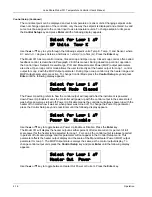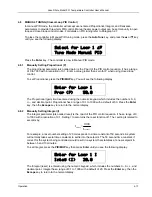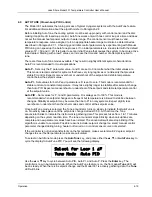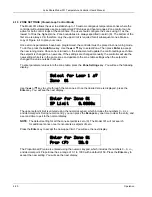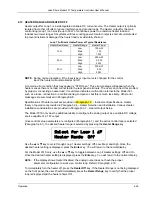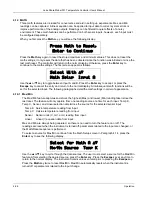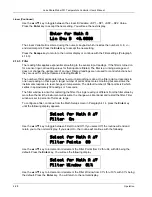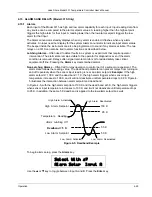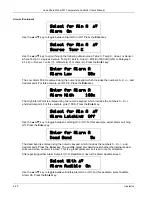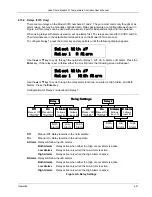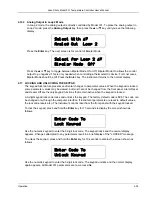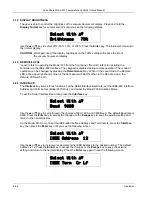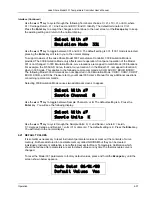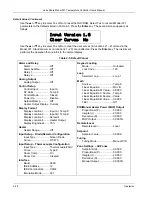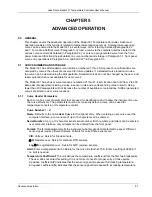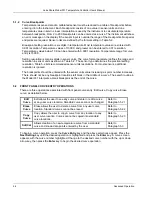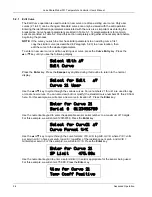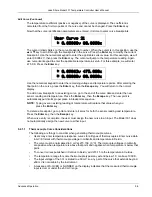
Lake Shore Model 331 Temperature Controller User’s Manual
4.15 ALARMS AND RELAYS (Model 331S Only)
4.15.1 Alarms
Each input of the Model 331 has high and low alarm capability for each input. Input reading data from
any source can be compared to the alarm setpoint values. A reading higher than the high setpoint
triggers the high alarm for that input. A reading lower than the low alarm setpoint triggers the low
alarm for that input.
The Alarm annunciator steadily displays when any alarm is enabled; it flashes when any alarm
activates. An input need not display for the system Alarm annunciator to indicate input alarm status.
The beeper inside the instrument can also be programmed to sound if any alarms activate. The two
relays on a 331S can also be tied to alarm functions as described below.
Latching Alarms
– Often used to detect faults in a system or experiment that require operator
intervention. The alarm state remains visible to the operator for diagnostics even if the alarm
condition is removed. Relays often signal remote monitors or for added safety take critical
equipment off line. Pressing the
Alarm
key clears latched alarms.
Non-Latching Alarms
– Often tied to relay operation to control part of a system or experiment. The
alarm state follows the reading value. The dead band parameter can prevent relays from turning on
and off repeatedly when the sensor input reading is near an alarm setpoint.
Example:
If the high
alarm setpoint = 100 K and the dead band = 1 K, the high alarm triggers when sensor input
temperature increases to 100 K, and it will not deactivate until temperature drops to 99 K. Figure 4-
5 illustrates the interaction between alarm setpoint and dead band.
In Figure 4-5, with the high alarm setpoint at 100 K and the dead band at 5 K, the high alarm triggers
when sensor input temperature increases to 100 K, and it will not deactivate until temperature drops
to 95 K. In addition, the same 5 K dead band is applied to the low alarm setpoint as well.
High Alarm Setpoint
Low Alarm Setpoint
D
e
adband = 5 K
100 K
50 K
95 K
55 K
Alarm Latching Off
Temperature Reading
High Alarm Activated
High Alarm Deactivated
Low Alarm Activated
Low Alarm Deactivated
Figure 4-5. Deadband Example
To begin alarm setup, press the
Alarm
key.
Select With °®
Alarm Setup Input A
Use the
s
or
t
key to toggle between Input A and B. Press the
Enter
key.
Operation
4-29


